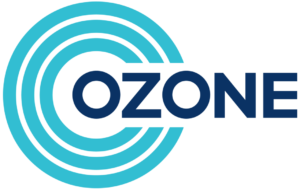Dora Michail-Clendinnen is Chief Strategy Officer at The Ozone Project and NDA’s monthly columnist.
The title for this piece is actually a quote from the famed mathematician, Lord Kelvin, who created the first physics laboratory in Britain and was a pioneer in many different fields, including electromagnetism and thermodynamics. Like many of advertising’s digital pioneers, he was focused on measurement as the core way of proving effect and impact.
Fast forward twenty-odd years from its inception and success measurement is one of the hottest topics in digital advertising – particularly with a total cull of third-party cookies on the horizon. While there are many different perspectives on new alternative metrics, it’s becoming increasingly clear that the measures we still tend to use today are not always most appropriate for the task in hand, and provide little scope for improving the impact of future digital marketing.
Once upon a time, when clicks met conversions…
There was a time – not too long ago – when the only metrics available to marketers were impressions, clicks, and by some (not particularly sophisticated) trickery, conversions. The technologies at that time lagged the performance measures used in other media channels and these basic methods for conversion tracking – often still used today – of post-view and post-click measurement remained open to gaming and never did justice to the contributions of digital ad campaigns to the brand consideration phase.
None of that stopped the digital advertising industry exploding into life, built on top of these very basic foundations. The catalyst for this exceptional growth springing from the unique advantage digital media offered; that each impression, click and conversion could – theoretically at least – be traced back to an individual, creating a nirvana of hyper-personalised messaging and 1:1 marketing.
At that time, adtech metrics such as cost-per-click, cost-per-acquisition, click-through-rate, conversion rates and – more recently – viewability metrics were considered ‘good enough’ proxies for campaign and business success, in the knowledge that, like the technology, they would evolve.
‘Good enough’ is not the holy grail
The technologies and tools we use today in digital advertising have evolved and are almost unrecognisable from where they started. Where we used to have servers now we have the cloud. Where we once had Excel reports to analyse, now we have algorithms and data models.
But while the technologies have evolved, and the macro cycle of digital transformation reaching almost all industries has taken hold, our marketing measures of success have not kept pace. What does focusing on driving clicks by bombarding users with retargeted ads to lure them back to a shopping basket do to brand affinity? It may drive more sales for the few that were likely to come back anyway, but what of those that don’t come back and never will, put off by the same persistent ads following them around the web?
The world for digital marketers is changing, and quickly. The relentless pursuit of hyper-personalisation has – in some quarters – led to an over-emphasis on performance marketing at the expense of understanding the full user journey and brand building. User-level tracking of web users has come under the scrutiny of regulators around the world, as well as the one third of internet users who now use an ad blocker. Data ethics and privacy principles are slowly but surely superseding basic GDPR consent requirements. At the same time social platforms have created a new form of ‘full-funnel’ marketing, showcasing brands with compelling creative formats that enable the consumer to transact there and then.
It’s time for attention to turn to business success
What measures of success should we be thinking about in this new world? The overarching answer is measures that drive business success, rather than measure sales. Broader marketing metrics such as brand impact, customer retention, and lifetime value improve business performance. Establishing a brand in the mind of a broader consumer base, capturing their attention with product messages and benefits will lift and improve the results of the well trodden lower funnel digital strategies to drive sales. Nurturing these customers to become ambassadors has proven to be infinitely more efficient than trying to convert new ones.
At the same time, every business is different and will have a different definition of business success. An online retailer with a high volume of repeat purchase customers has a different relationship with their customers, to an automotive manufacturer, or a subscription business such as a mobile network.
You don’t need to be a professor in advertising (or indeed a mathematician like Lord Kelvin) to know that different types of advertising, in different categories, work in different ways. Similarly, you don’t need that PhD to know that if things work differently, they’ll need to be measured differently. The good news is, we’re seeing a lot of movement in this space, with alternative measures evolving – such as our recently launched Ozone Attention Index – that individually and collectively can help the true power of digital advertising be realised.
As we enter this new chapter – one led by privacy-first thinking and with even more powerful tools at our disposal – there has never been a more important time to clearly – and appropriately – measure the impact of the amazing innovation and brilliant creativity in our industry.









